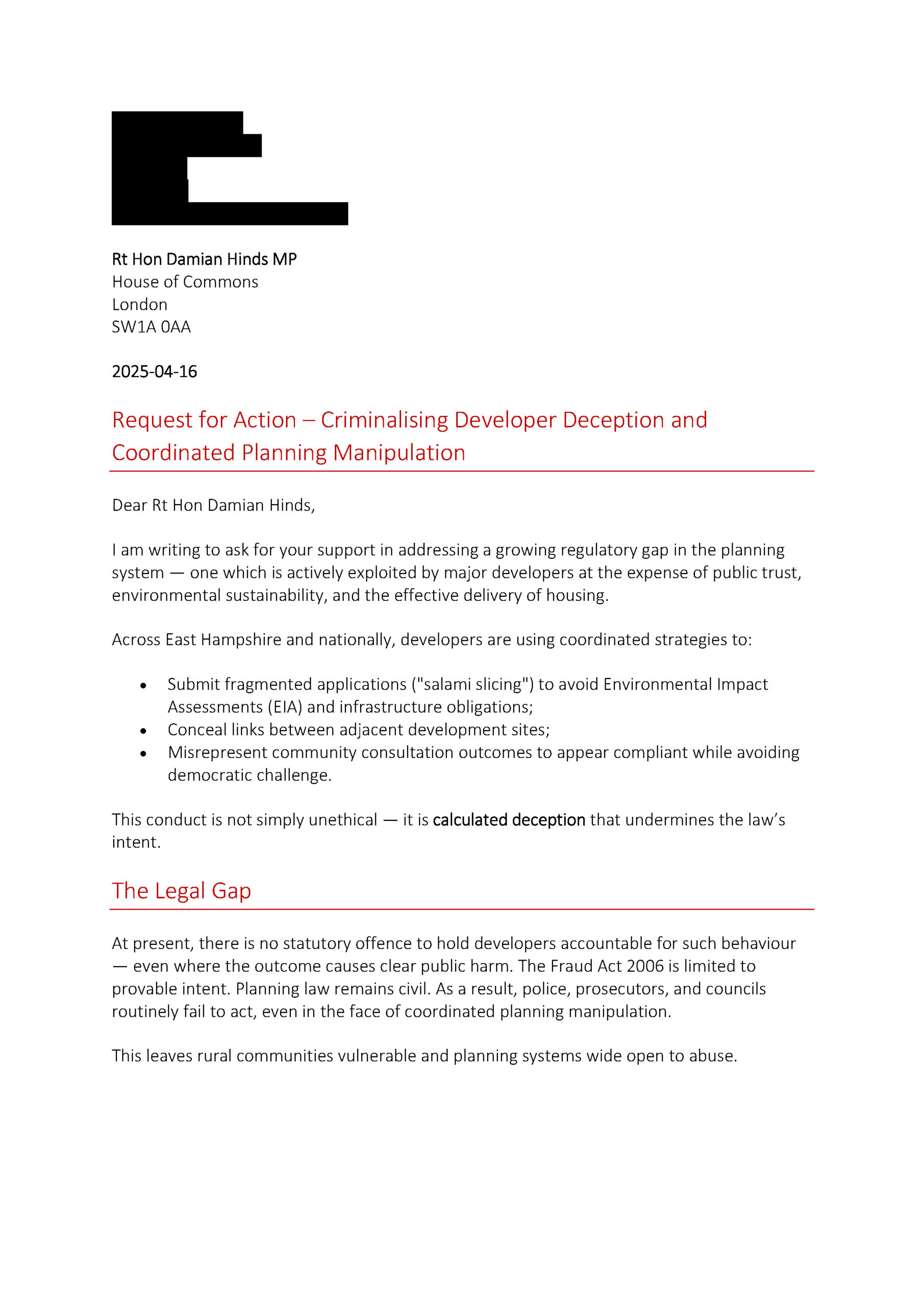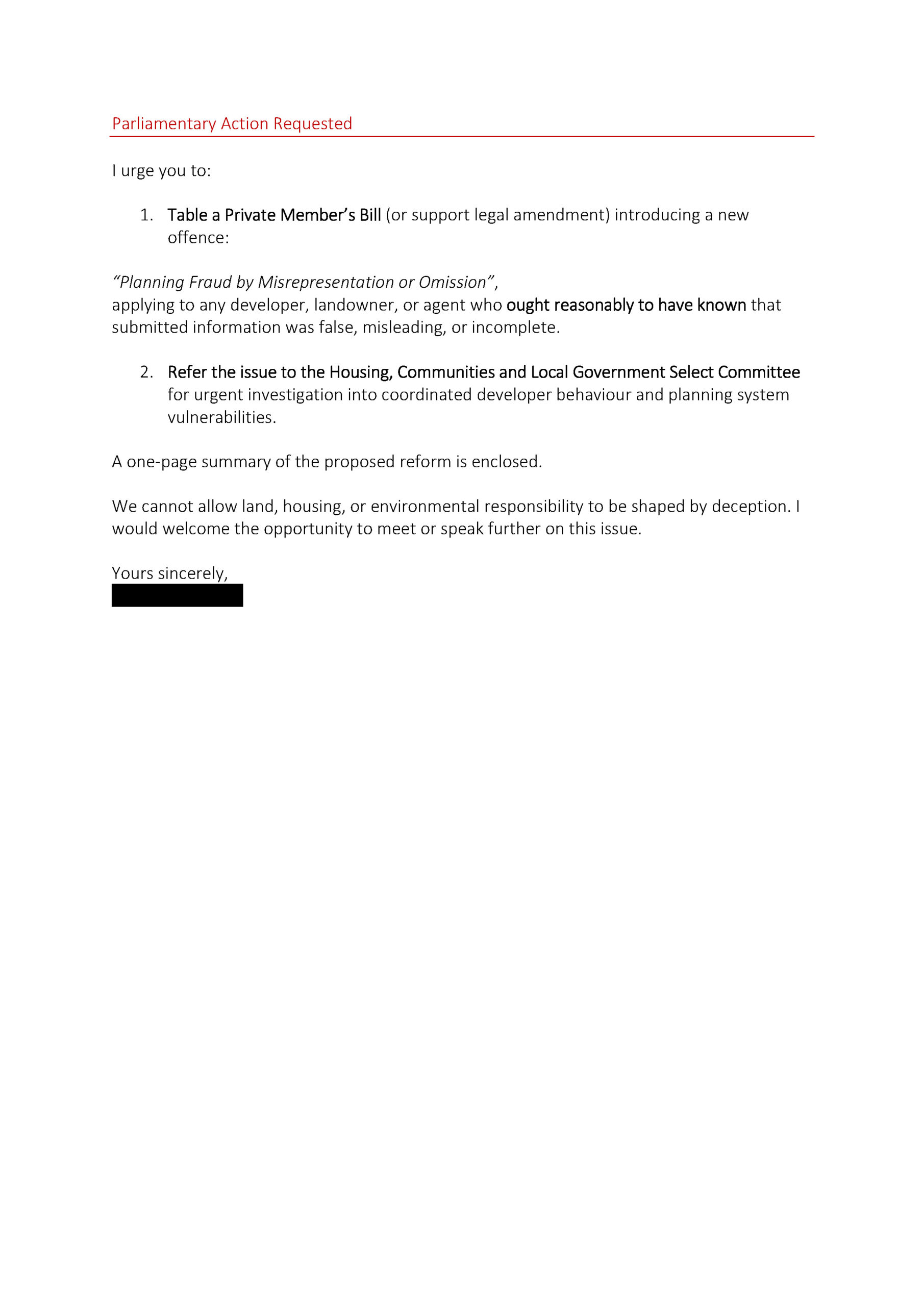🏠 The Hidden Economics: Landbanking, House Prices, and the “Need” Myth
Local authorities should function like dialysis — not to cure the disease, but to filter out harm, maintain system function, and prevent collapse while the root pathology is addressed.
But the core disease here is not poor planning. It’s an organised, developer-aligned oligarchy — not yet criminal by classification, but operating in sync, exploiting loopholes, applying pressure to an already compromised system, and then presenting themselves as the solution. It’s not just corruption of process; it’s a system under stress, being deliberately stressed further for gain.
Housing targets themselves – as they are calculated now – are not fixed metrics; they are reactive. They rise in areas where house prices rise faster than wages. If the key driver is the Affordability Ratio — the ratio of median house prices to median local earnings — then the higher the ratio, the greater the assumed “need” for housing, and the higher the target — regardless of whether local supply is being withheld or manipulated upstream.
🧠 Context:
If you think of an Environmental Impact Assessment (EIA) as the diagnostic filter used to protect a critically ill patient on dialysis — identifying external stressors that could trigger collapse — then the EIA screening opinion is like triage: does the proposed intervention (the development) show symptoms or risk factors that justify closer investigation to protect the patient — the land, the community, the environment?
Legally, councils are required to give reasons for why an EIA is or isn’t needed. But in practice — by their own choice, since nothing in the NPPF prevents them from designing a more robust process — many Local Planning Authorities treat this screening as a tick-box exercise.
They reuse vague phrases like “not likely to have significant effects,” lean on the selective blindness of individual officers — sometimes framed as “expert opinion” — ignore cumulative developments, and rely on outdated or incomplete assessments.
It’s like checking the vitals but skipping the bloodwork — ignoring infection markers to keep the charts looking stable.
Each individual site passes, but no one asks why systemic stress is escalating. It’s a system that refuses to detect organ rejection or environmental shock — because each stressor, viewed in isolation, still meets the baseline.
Worse still: they get away with it — because the only way to challenge it is through Judicial Review. And very few residents or parish councils have the resources to go to court.
Meanwhile, councillors are under political pressure to deliver housing numbers — but it is the planning officers who prepare the reasoning reports, interpret public responses, summarise consultee feedback, and determine what information is shared (or withheld) during the process. Officers who consistently deliver “results” may be mistakenly seen as high performers, even when the delivery is built on procedural shortcuts, minimised evidence, or filtered consultation.
In this self-reinforcing cycle, councillors hear what reassures them, officers see what confirms their intent, and together, they say only what’s needed to justify hearing nothing else.
Public consultation becomes another compromised tool.
Instead of informed consent, it’s like giving the patient a form with the critical risk section left blank — or worse, pre-filled with misleading data — then asking them to sign off with a space that says, “Tell us something about yourself.”
A question designed not to inform treatment, but to create the appearance of participation, while ensuring that any response can later be dismissed as non-material to the outcome.
Omissions are routine; relevant questions go unasked; dissent is procedurally acknowledged and practically ignored.
📍 Where We Are Now
On 16 April 2025, I formally submitted a request for Parliamentary action to Rt Hon Damian Hinds MP, raising concerns over the growing exploitation of loopholes in the planning system by major developers.
My submission included:
- A letter requesting that Mr Hinds support the creation of a new criminal offence:
“Planning Fraud by Misrepresentation or Omission”
- A one-page proposal outlining the rationale and legal basis for this reform, including specific recommendations for Parliamentary and Select Committee action.
Damian Hinds’ office responded supportively and offered to forward the submission to the relevant Minister for a response on whether a legal gap exists.
I’ve confirmed that I welcome this step — but have also asked Mr Hinds to share his personal stance on the matter and consider using the other Parliamentary avenues at his disposal to support action. This issue goes beyond ministerial delegation: it is about public integrity, enforceability, and preventing systemic abuse in planning across the country.
This is the first step in what I hope will become a wider campaign to close the legal gap around developer deception and protect communities from coordinated planning manipulation.
More updates will follow as the response progresses.
The Proposal
I have asked Damian Hinds MP to:
- Table a Private Member’s Bill, or support legal reform through other routes;
- Refer the issue to the Housing and Local Government Select Committee;
- Raise the matter in Parliament;
- Use his position to support legislative engagement with DLUHC (Department for Levelling Up, Housing and Communities).
📉 What is Stock Market Manipulation?
Stock market manipulation refers to deliberately misleading the market to distort prices or trading volumes for personal gain. Common forms include:
- Pump and dump schemes (artificially inflating share price then selling)
- Spreading false or misleading information
- Coordinated trading to create a false sense of demand
- Wash trading (buying and selling to yourself to simulate activity)
⚖️ Is It Illegal in the UK?
Yes — under the Financial Services and Markets Act 2000 and Market Abuse Regulation (EU MAR), such conduct is strictly prohibited. The Financial Conduct Authority (FCA) can:
- Impose fines
- Ban individuals from working in financial services
- Pursue criminal charges, which can carry up to 7 years’ imprisonment
🧩 So Why Is This Relevant?
Because in the planning system:
Developers can as of yet legally engage in landbanking, planning pressure tactics, and even site suppression for leverage — all of which are comparable in structure to stock manipulation — but face no criminal penalties.
In essence:
If you manipulate shares, you risk prison.
If you manipulate planning policy, you might get a bonus.
Criminalising deception is a starting point — an absolute must — even if only as a preventative measure to make potential beneficiaries of such disinformation think twice before doing it again.
✊ A Word About the Campaign
I’m just one person. A one-person orchestra trying to show the path forward — but I don’t expect things to change unless others stay vigilant too. One of the quiet goals of oligarchic systems — whether in authoritarian states or hidden within corporate lobbying — is to wear down public vigilance. To make the average person believe it’s too complicated, too fixed, or too late to challenge what’s wrong.
But it isn’t.





















